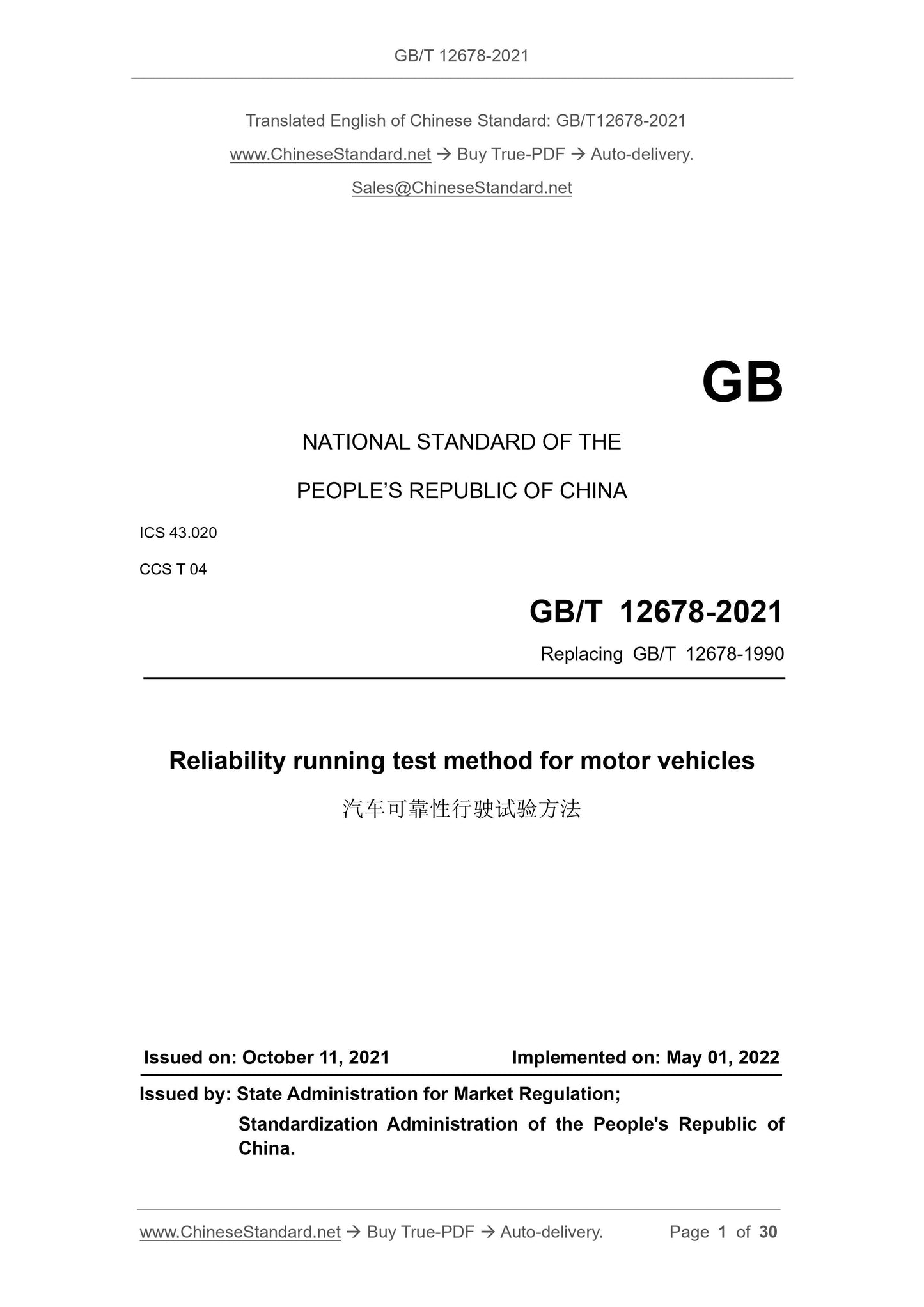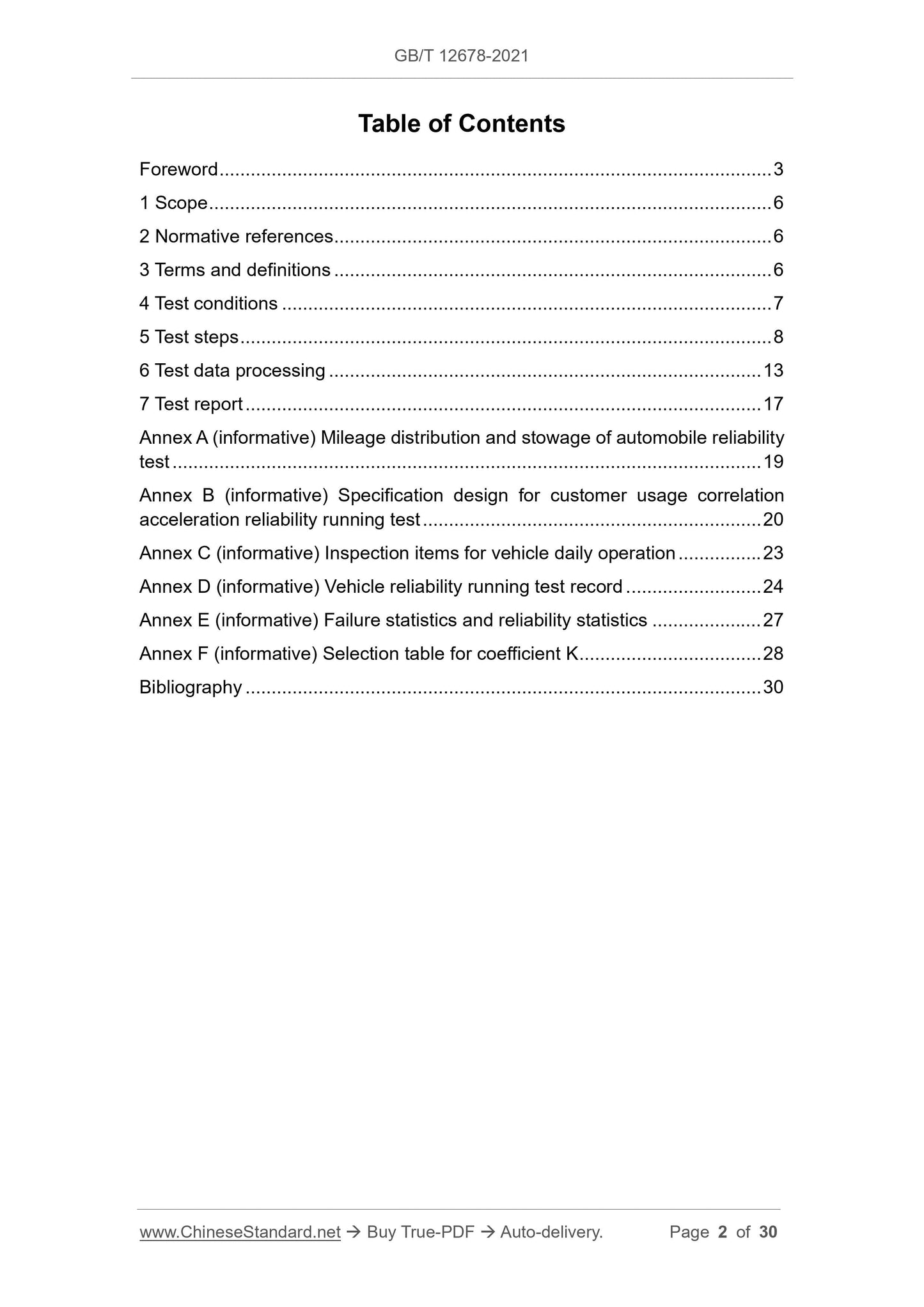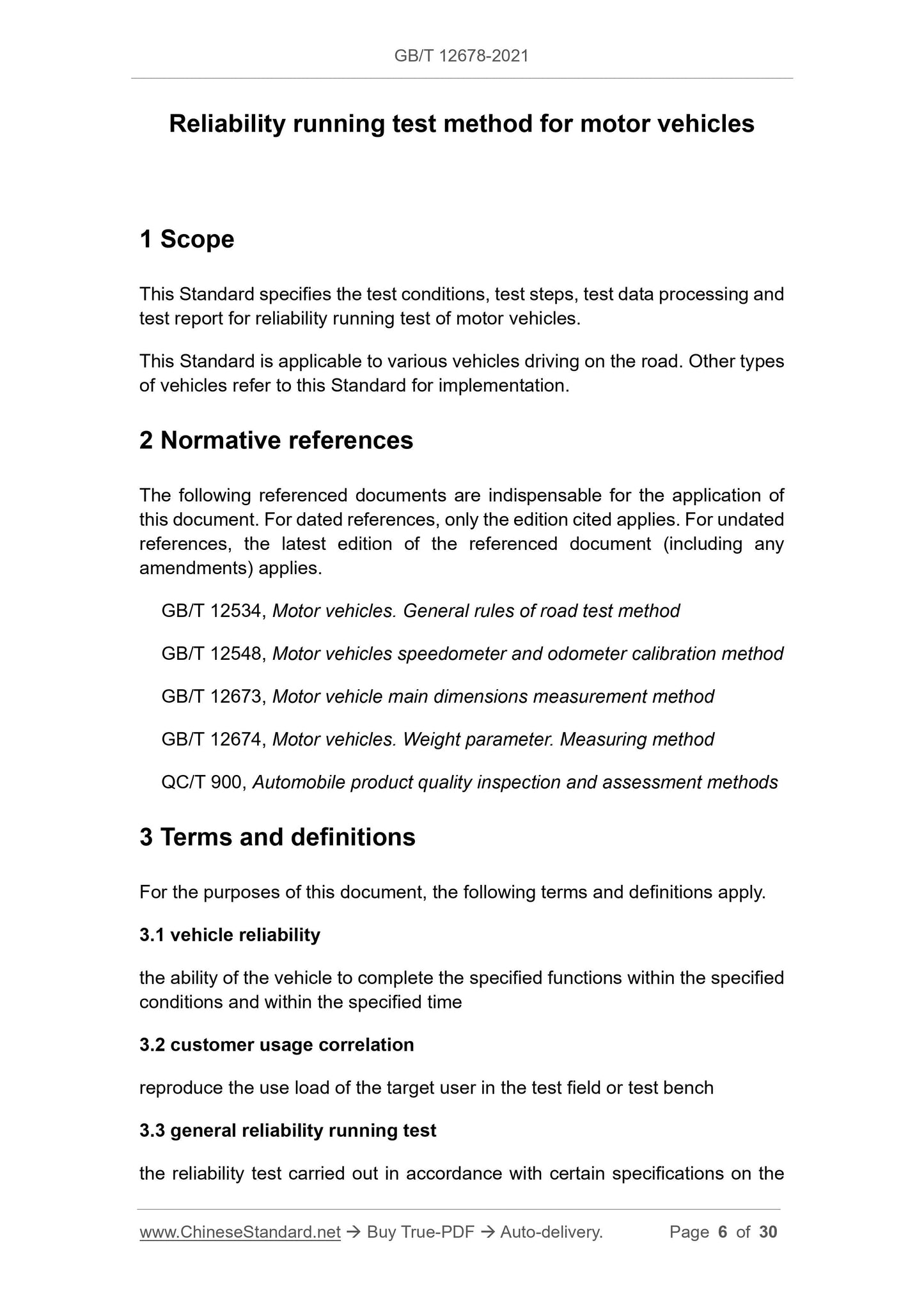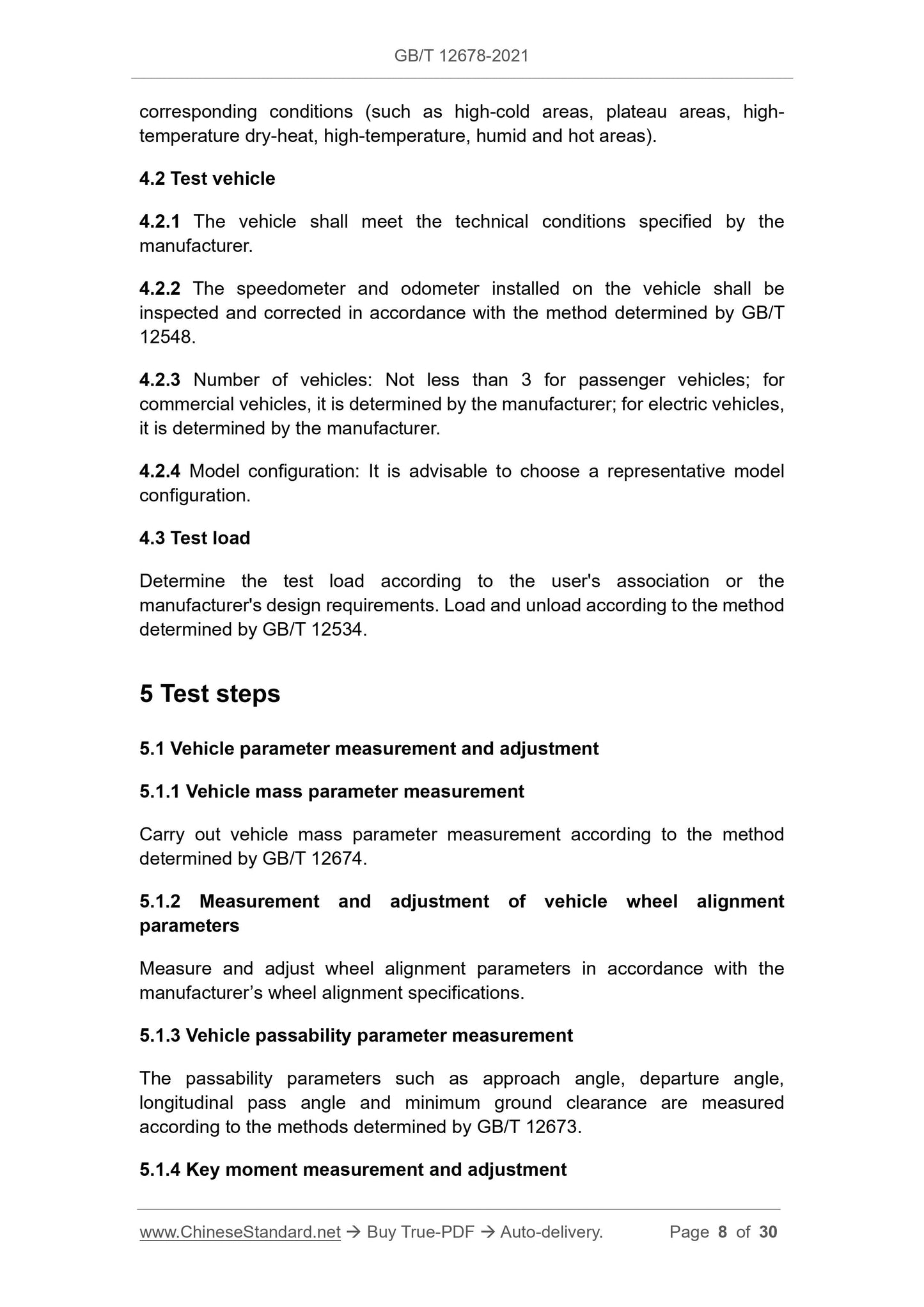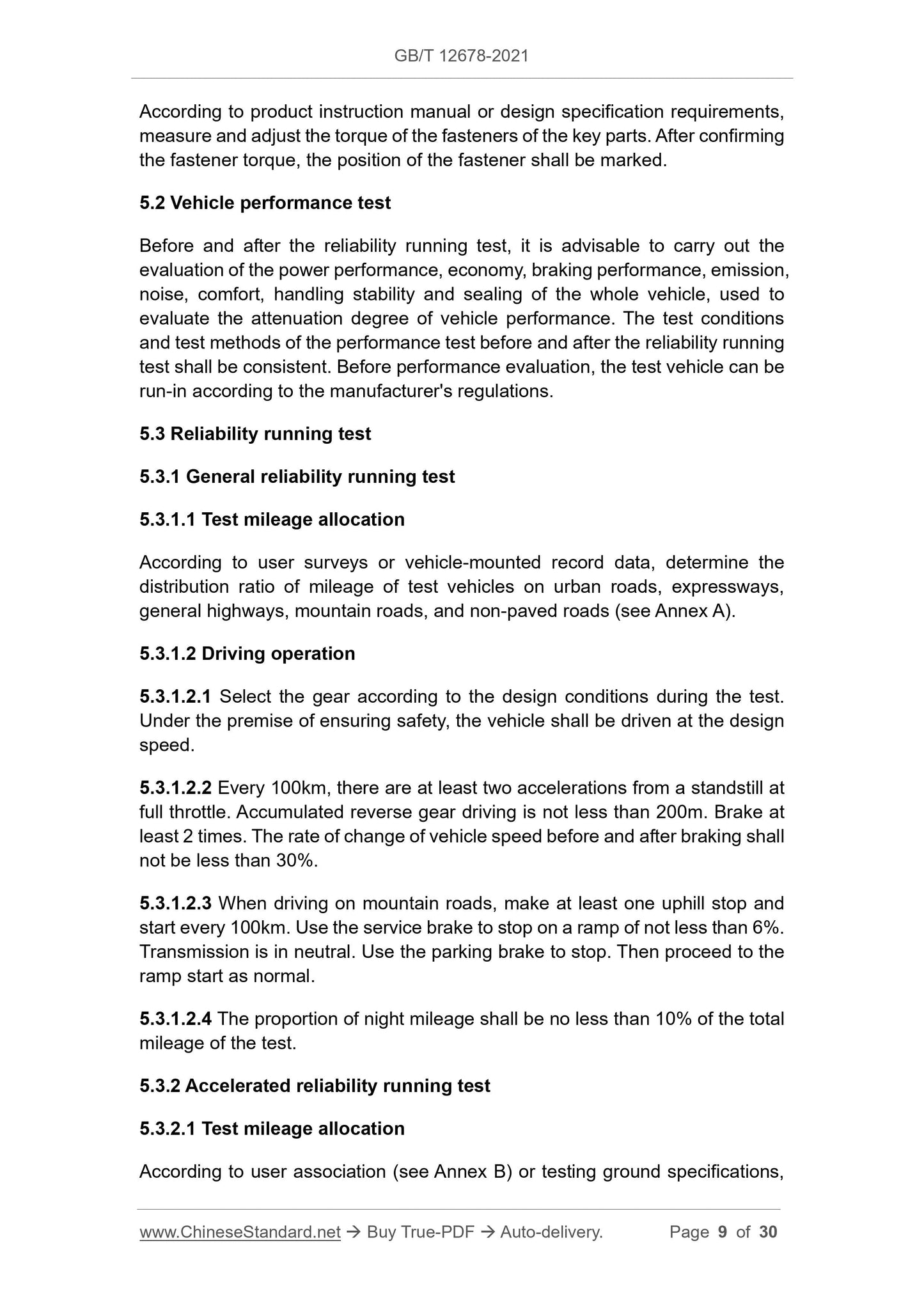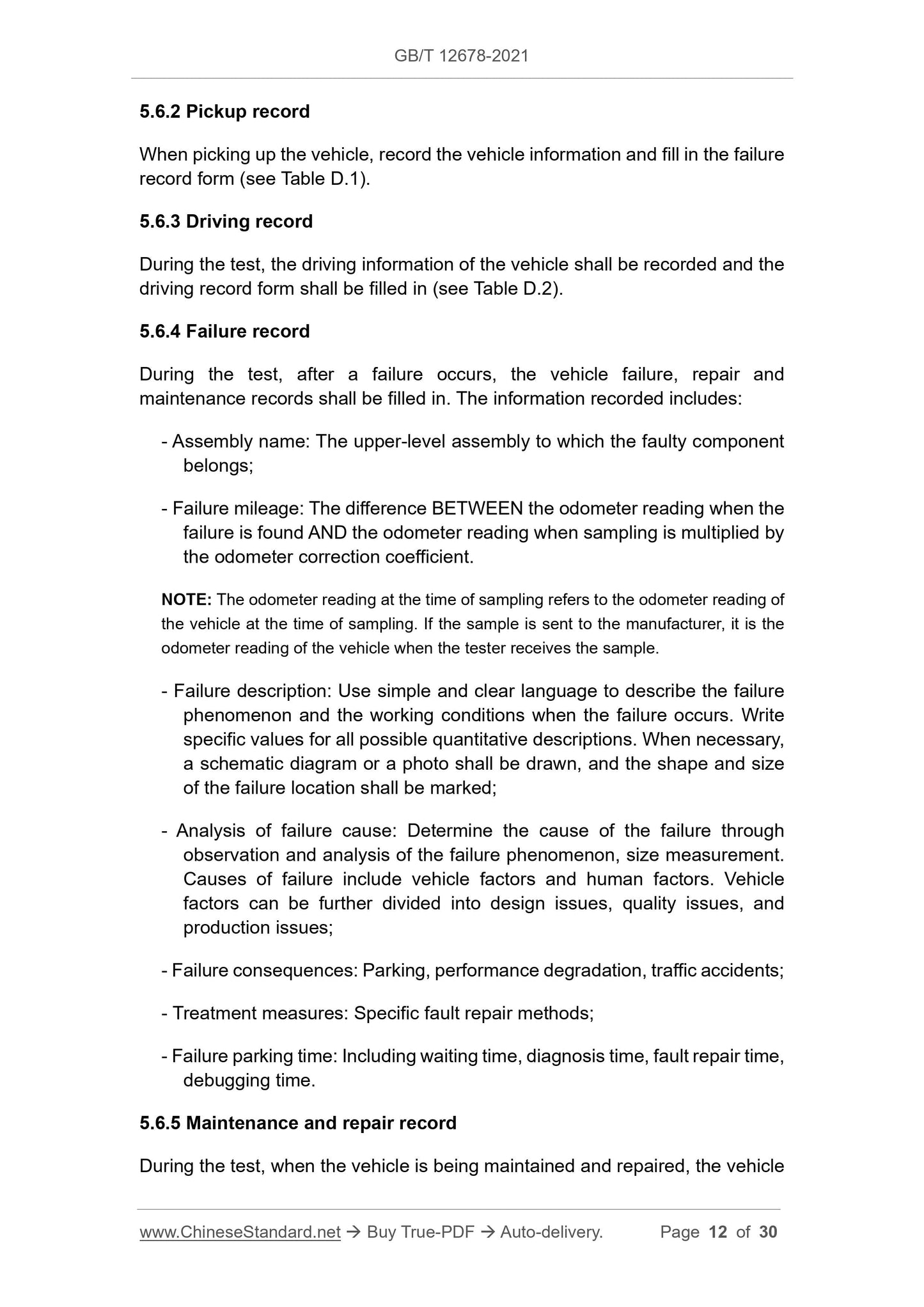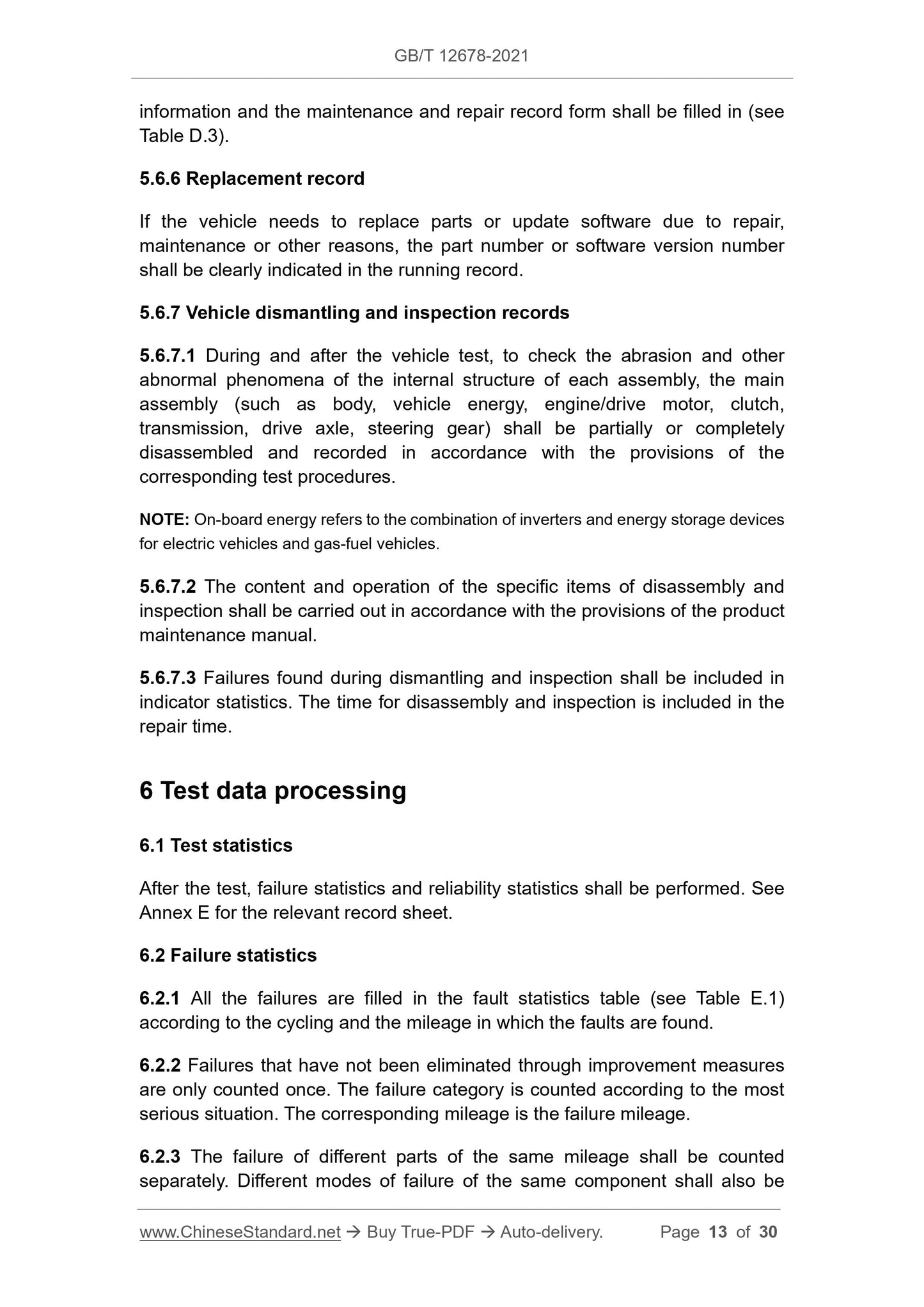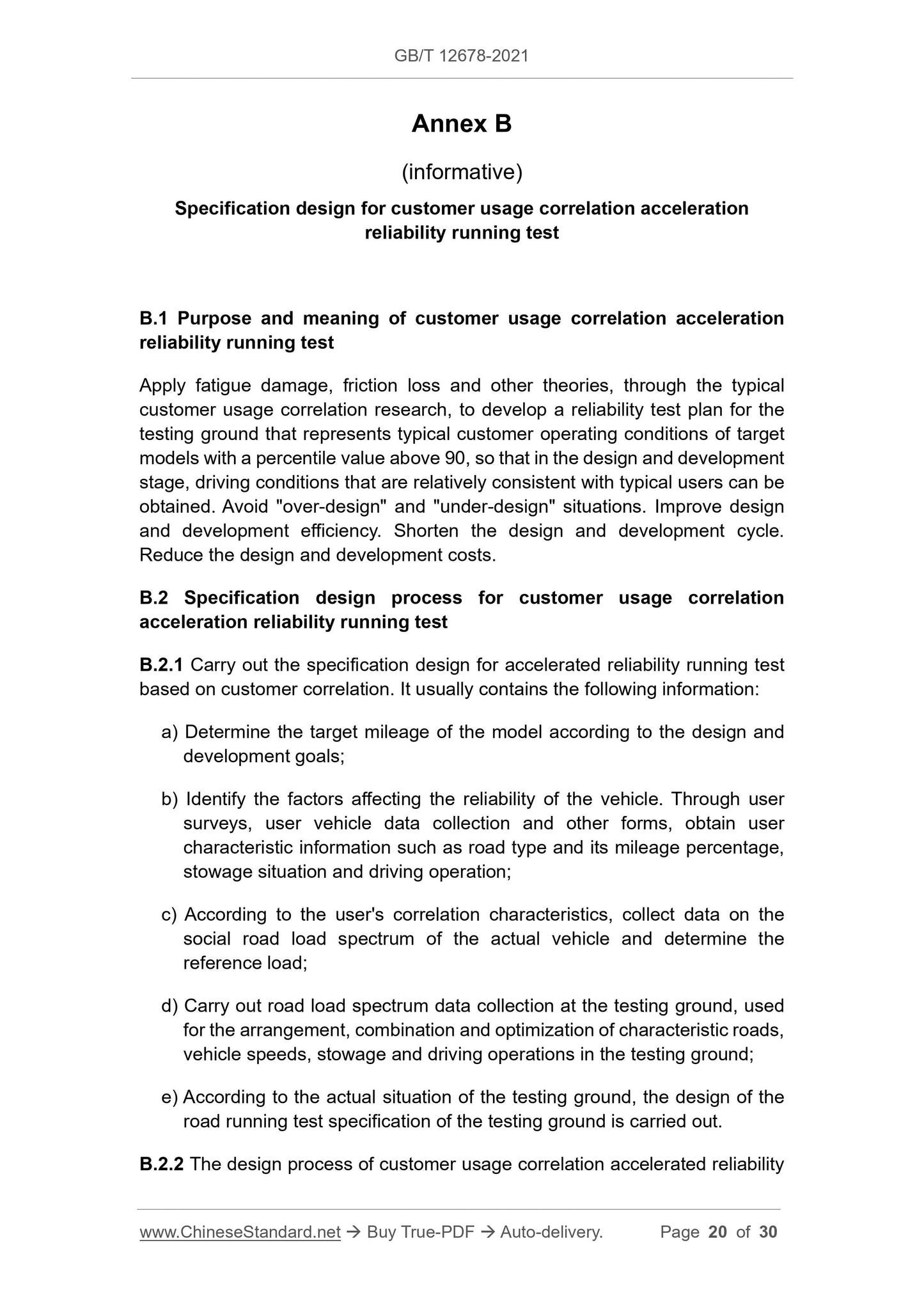1
/
of
8
www.ChineseStandard.us -- Field Test Asia Pte. Ltd.
GB/T 12678-2021 English PDF (GB/T12678-2021)
GB/T 12678-2021 English PDF (GB/T12678-2021)
Regular price
$320.00
Regular price
Sale price
$320.00
Unit price
/
per
Shipping calculated at checkout.
Couldn't load pickup availability
GB/T 12678-2021: Reliability running test method for motor vehicles
Delivery: 9 seconds. Download (and Email) true-PDF + Invoice.Get Quotation: Click GB/T 12678-2021 (Self-service in 1-minute)
Newer / historical versions: GB/T 12678-2021
Preview True-PDF
Scope
This Standard specifies the test conditions, test steps, test data processing andtest report for reliability running test of motor vehicles.
This Standard is applicable to various vehicles driving on the road. Other types
of vehicles refer to this Standard for implementation.
Basic Data
| Standard ID | GB/T 12678-2021 (GB/T12678-2021) |
| Description (Translated English) | Reliability running test method for motor vehicles |
| Sector / Industry | National Standard (Recommended) |
| Classification of Chinese Standard | T04 |
| Word Count Estimation | 23,273 |
| Issuing agency(ies) | State Administration for Market Regulation, China National Standardization Administration |
Share
